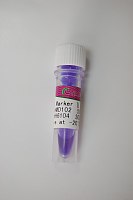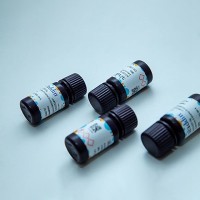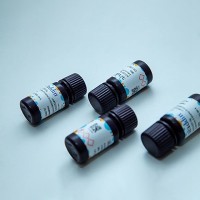Multiplex Illumina Sequencing Using DNA Barcoding
互联网
- Abstract
- Table of Contents
- Materials
- Figures
- Literature Cited
Abstract
The amount of sequence obtained by modern sequencing machines greatly exceeds the sequencing depth requirements of many experiments, especially those involving organisms with small genomes. In the interest of economy and efficiency, various strategies have been developed for multiplexing, in which samples are uniquely tagged with short identifying sequences known as barcodes, pooled, and then sequenced together in a single lane. The resulting combined sequence data are subsequently sorted by barcode before bioinformatic analysis. This unit contains a barcoding protocol for the preparation of up to 96 ChIP samples for multiplex sequencing in a single flow cell lane on the Illumina platform. This strategy may be extended to even larger numbers of samples and may also be generalized to other sequencing applications or sequencing platforms. Curr. Protoc. Mol. Biol. 101:7.11.1?7.11.11. © 2013 by John Wiley & Sons, Inc.
Keywords: barcoding; multiplexing; deep sequencing; next?generation sequencing; ChIP?seq
Table of Contents
- Introduction
- Basic Protocol 1: Construction of Barcoded ChIP‐seq Libraries
- Support Protocol 1: Preparation of Barcoded Y‐Adapters
- Support Protocol 2: DNA Purification and Size Selection Using SPRI‐Magnetic Beads
- Reagents and Solutions
- Commentary
- Literature Cited
- Figures
- Tables
Materials
Basic Protocol 1: Construction of Barcoded ChIP‐seq Libraries
Materials
Support Protocol 1: Preparation of Barcoded Y‐Adapters
Materials
Support Protocol 2: DNA Purification and Size Selection Using SPRI‐Magnetic Beads
Materials
|
Figures
-
Figure 7.11.1 Outline for preparation of 5′ barcoded DNA libraries for Illumina sequencing. DNA fragments ranging from 100 bp to 500 bp are first subjected to end‐repair, 5′ phosphorylation, and 3′ A base addition. Y‐adapters with unique barcode sequences (depicted as blue lines) are then ligated onto both ends of DNA fragments. Purified ligation products are subjected to PCR amplification with primers (PCR1/2) containing the full sequences required for hybridization to the Illumina sequencing flow cell. The quality and quantity of purified library DNA can be evaluated by qPCR and Bioanalyzer analyses, respectively. DNA libraries are then ready for mixing and Illumina sequencing. When mixing libraries with severe primer dimer contamination, several rounds of gel or SPRI purifications may be needed to completely eliminate the contaminating primer dimers. A Bioanalyzer assay may be used to check for the presence of primer dimers in the final pooled library. View Image
Videos
Literature Cited
| Church, G.M. and Kieffer‐Higgins, S. 1988. Multiplex DNA sequencing. Science 240:185‐188. | |
| Lefrançois, P., Euskirchen, G.M., Auerbach, R.K., Rozowsky, J., Gibson, T., Yellman, C.M., Gerstein, M., and Snyder, M. 2009. Efficient yeast ChIP‐Seq using multiplex short‐read DNA sequencing. BMC Genomics 10:37. | |
| Meyer, M., Stenzel, U., Myles, S., Prüfer, K., and Hofreiter, M. 2007. Targeted high‐throughput sequencing of tagged nucleic acid samples. Nucleic Acids Res. 35:e97. | |
| Tirosh, I., Wong, K.H., Barkai, N., and Struhl, K. 2011. Extensive divergence of yeast stress responses through transitions between induced and constitutive activation. Proc. Natl. Acad. Sci. U.S.A. 108:16693–16698. | |
| Wong, K.H. and Struhl, K. 2011. The Cyc8‐Tup1 complex inhibits transcription primarily by masking the activation domain of the recruiting protein. Genes Dev. 25:2525–2539. | |
| Internet Resource | |
| http://zarmik.hms.harvard.edu/Barcoding | |
| Python scripts for data pre‐processing and analysis. |







